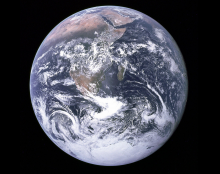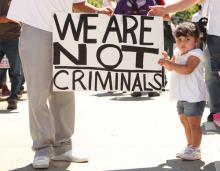Odyssey Network
Before I knew God, I knew Joseph.
If you grew up in the 80s, like I did, there’s a decent chance that your earliest knowledge of Joseph’s story came through a local high school or community theater production of Joseph and the Amazing Technicolor Dreamcoat. That musical (by Broadway legends Andrew Lloyd Webber and Tim Rice) playfully (and rather faithfully) tells the story of a young boy, the favorite son of the patriarch Jacob, who sets in motion both a family and a geo-political drama by flaunting his fashionable coat. As a youngest child, I loved the story—I fancied myself as the favorite son, destined for greatness, who would one day be like Jacob, irresistible to the ladies. There is a time in life when each of us is made up of ego needs and delusions of grandeur.

Political talk of moral obligation almost always invokes future children; it is not politically controversial to hope that our children and grandchildren will live on a safe planet. But the moral dimensions of climate change are far more complex and granular: food shortages here, extreme weather events there, floods that displace people in coastal regions, melting polar icecaps causing increased extinctions, the vulnerability of the global poor.
A moral vision able to see these granular risks comes, I would argue, not from time (Obama’s “future children” or the Pope’s “Creation will destroy us”), but from space.
Since 1946, the modern world has been able to view images of the earth from space. Some four millennia earlier, Hebrew scribes penned Genesis 1’s creation account of the whole known world. Ancient and modern, these are two portrayals of the earth, one to begin the Scriptures and one iconic of the modern space age — both spatial lenses offering moral vision about climate change.

Debates on immigration in the United States continue to move in the default direction of North/South. As such, the prominent debating points often direct public attention to the U.S./Mexico border fence and the Latina/o community. By sleight-of-hand, many in the mainstream media tend to recast a centuries-old U.S. immigration experience as a Latina/o problem.
Unlike the variety of migration stories in the Bible, the forces creating migration for many Latina/o families are closely tied to the issues of power and hyper-consumerism. Often as a last resort do immigrant families enter the northbound currents of low-wage laborers that, as Bishop Minerva Carcaño describes, feed “the economic machine in this country.”